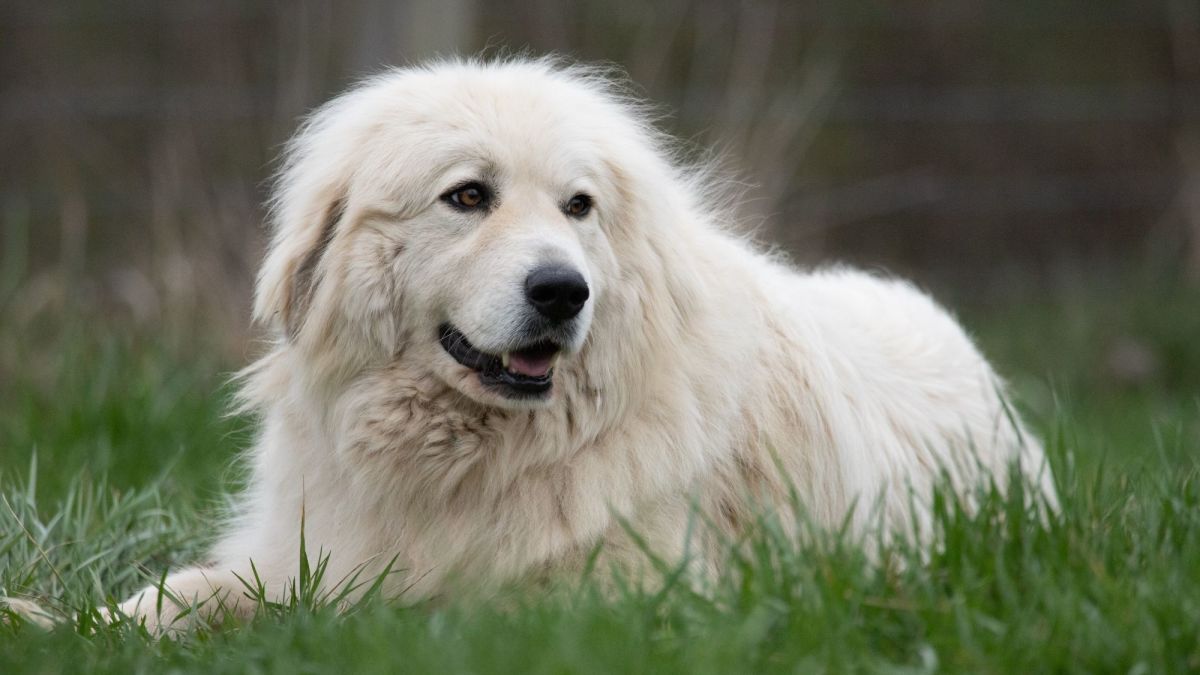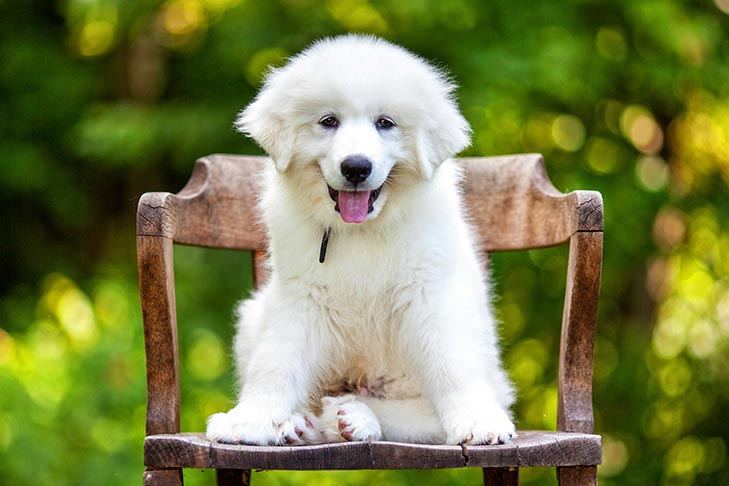Are you curious to see a picture of a Pyrenees dog, one of the most majestic and impressive dog breeds? Look no further! Our comprehensive guide will not only fulfill your request to “show me a picture of a Pyrenees dog” but also provide a deeper insight into this amazing breed. The Pyrenees dog, also known as the Great Pyrenees, is a gentle giant with a stunning white coat and a loyal, protective nature. In this blog, we will showcase breathtaking images of Pyrenees dogs in various settings, allowing you to admire their beauty and grace. Join us on a visual journey to explore and appreciate the splendor of the Pyrenees dog breed.
Post a picture with your dog that doesn’t involve shooting them and throwing them in a gravel pit. I’ll start. https://t.co/VA3O0lcHtJ pic.twitter.com/gICODi9YD5
— Governor Tim Walz (@GovTimWalz) April 26, 2024
Introduction to Pyrenees Dogs
Pyrenees Dogs, also known as Great Pyrenees, are majestic and gentle giants originating from the Pyrenees Mountains. They are renowned for their stunning white coats and impressive size.
History of Pyrenees Dogs
The Pyrenees Dogs have a rich history as protectors of livestock in the mountainous regions between France and Spain. Known for their loyalty and intelligence, they were originally bred to guard sheep.
Characteristics of Pyrenees Dogs
Pyrenees Dogs are characterized by their calm demeanor, affection towards their family, and their protective instincts. They are independent thinkers and may exhibit stubbornness at times.
- Size: Pyrenees Dogs are large breed dogs, with males typically weighing between 100-160 pounds and females between 85-115 pounds.
- Coat: Their beautiful double coat is thick and weather-resistant, with a soft undercoat and a long, coarse outer coat.
- Temperament: They are gentle, patient, and devoted to their family, making them great companions for families and children.

History and Origins of the Breed
The Pyrenean Mountain Dog, also known as the Great Pyrenees, has a rich history dating back to the Pyrenees Mountains between France and Spain. This majestic breed was originally bred to guard livestock, particularly sheep, in the mountainous regions.
Origins
The Great Pyrenees breed is believed to have descended from ancient flock guardian dogs that were brought to the Pyrenees Mountains by migrating tribes around 3000 B.C. These dogs were prized for their protective instincts and formidable size, helping shepherds ward off predators.
The breed’s history is intertwined with nobility as they were favored by French royalty, including Louis XIV, who declared the Pyrenees Mountain Dog as the Royal Dog of France in the 17th century.
Breed Standard
The American Kennel Club recognized the Great Pyrenees breed in 1933. Known for their elegance and grace, these dogs have a striking white coat with distinctive markings. They possess a gentle and affectionate nature, making them excellent companions and guardians.
Characterized by their intelligence and loyalty, Pyrenean Mountain Dogs excel in activities such as obedience, agility, and therapy work. They are beloved for their steadfast devotion to their families and gentle demeanor with children.

Physical Characteristics and Appearance
Pyrenees dogs, also known as Great Pyrenees, are majestic and beautiful creatures. They are large, strong dogs with a thick double coat that comes in various shades of white or cream, allowing them to blend in with their snowy surroundings in the Pyrenees mountains. Their muscular build exudes strength and grace.
Size and Build
These dogs stand tall with males typically reaching 27-32 inches (69-81 cm) at the shoulders and females slightly smaller. They have a strong, well-proportioned build that showcases their agility and endurance.
The Pyrenees is a protective breed with a noble posture, making them an ideal guardian and companion for families and livestock.
Coat and Grooming
Their thick double coat consists of a soft, woolly undercoat and a weather-resistant outer coat that helps them stay warm in cold climates. Regular grooming is essential to prevent matting and keep their coat clean and healthy.
Their large, gentle eyes are expressive and convey their kind and intelligent nature, making them even more captivating.
Temperament and Behavior Traits
Pyrenees dogs are known for their gentle and loyal temperament. They are incredibly patient, making them great family pets and excellent with children. Their protective nature stems from their history as livestock guardians, often exhibiting bravery in defending their flock.
Intelligence and Trainability
Pyrenees dogs possess high intelligence and are quick learners. Training should be consistent, firm yet gentle, and positive reinforcement-based to bring out their best qualities. Early socialization is crucial to prevent shyness or aggression.
Exercise Needs
Despite their large size, Pyrenees dogs have moderate exercise requirements. Daily walks and playtime in a securely fenced area are essential to keep them physically and mentally stimulated. Mental exercise such as puzzle toys can also be beneficial.
Caring for a Pyrenees Dog
Pyrenees dogs are majestic and beautiful creatures that require special care and attention to thrive. Here are some tips on how to care for your beloved Pyrenees:
Proper Nutrition
Ensure your Pyrenees dog is fed a high-quality diet suitable for its size and activity level. A balanced diet is crucial for their health and well-being. Consult with a veterinarian to determine the best food for your Pyrenees.
Remember to provide plenty of fresh water at all times to keep your Pyrenees hydrated.
Regular Exercise
Pyrenees dogs are active and energetic animals that require regular exercise to stay healthy. Take them for daily walks or provide a spacious area for them to run and play.
Engaging in physical activities with your Pyrenees will also help strengthen the bond between you and your furry companion.
Grooming and Hygiene
Regular grooming is essential to keep your Pyrenees’ coat in top condition. Brush their thick fur to prevent matting and remove loose hair. Bathing should be done occasionally to keep them clean.
Don’t forget to trim their nails, clean their ears, and brush their teeth regularly to ensure overall hygiene.
Training Tips and Techniques
Training a Pyrenees dog requires patience, consistency, and positive reinforcement techniques. These majestic breeds are known for their intelligence and independent nature, so it’s essential to establish yourself as the leader in a gentle but firm manner.
Consistent Exercise Regimen
Pyrenees dogs have high energy levels, so regular exercise is crucial for their physical and mental well-being. Daily walks, runs, or engaging activities help prevent boredom and destructive behaviors.
To keep your Pyrenees healthy, a well-balanced diet is also important. Consult with a veterinarian to ensure you’re providing the right nutrition for your furry friend.
Positive Reinforcement Training
Use positive reinforcement techniques such as treats, praise, and play as rewards for good behavior. Pyrenees respond well to encouragement and love to please their owners.
- Keep training sessions short and engaging to maintain their interest.
- Consistency is key; reward desirable behaviors immediately.
- Avoid punishment-based training methods as Pyrenees are sensitive dogs.
Common Health Issues and Care
Proper care and attention are essential to keep your Pyrenees dog healthy and happy. Regular veterinary check-ups are crucial to monitor the overall well-being of your pet.
Exercise Needs
Pyrenees dogs are known for their large size and energy levels. Daily exercise is crucial to prevent obesity and maintain their physical and mental health.
Ensure your Pyrenees gets consistent exercise to prevent behavioral issues.
Dietary Requirements
Pyrenees dogs require a balanced diet to support their growth and overall health. Provide high-quality dog food to meet their nutritional needs.
- Ensure fresh water is always available for your Pyrenees dog.
- Consult your vet for specific dietary recommendations tailored to your pet’s needs.
Common Health Issues
Pyrenees dogs are prone to certain health issues such as hip dysplasia, bloat, and heart problems. Regular vet visits can help detect and address potential health concerns.
Exercising and Keeping Your Pyrenees Dog Fit
Regular exercise is essential for maintaining the health and fitness of your Pyrenees dog. These majestic breeds require ample physical activity to prevent obesity and promote overall well-being.
Outdoor Activities
Engage your Pyrenees in outdoor activities such as walking, hiking, or playing fetch in a spacious area. These activities not only provide physical exercise but also stimulate their minds.
Varied terrain can help strengthen their muscles and keep them agile. Ensure to monitor their exercise intensity based on their age and health condition.
Interactive Games
Introduce interactive games like hide-and-seek or puzzle toys to keep your Pyrenees mentally stimulated. Mental exercises are as important as physical ones for their well-rounded development.
These activities can prevent boredom and destructive behavior. Rotate different games to maintain their interest and challenge their problem-solving skills.
Fun Activities and Games for Pyrenees Dogs
Keeping your Pyrenees dog entertained and mentally stimulated is essential for their overall well-being. Below are some fun activities and games to keep your Pyrenees active and happy.
Outdoor Adventures
Pyrenees dogs love exploring the great outdoors. Take them for long hikes in nature trails or play fetch in a spacious park.
Engaging in outdoor activities will not only keep them physically active but also provide mental stimulation.
Hide and Seek
Play a fun game of hide and seek with your Pyrenees dog. Hide their favorite toys or treats around the house and let them use their excellent sense of smell to find them.
This game will challenge their mental abilities and keep them entertained for hours.
Agility Training
Set up an agility course in your backyard for your Pyrenees. Teach them to navigate through tunnels, jump over hurdles, and weave through poles.
This activity not only provides physical exercise but also strengthens the bond between you and your dog.
Frequently Asked Questions
- What does a Pyrenees dog look like?
- A Pyrenees dog is a large, majestic breed with a thick double coat in colors such as white, cream, or gray. They have a strong build, a bushy tail, and a gentle expression.
- Are Pyrenees dogs good pets?
- Pyrenees dogs are known for their gentle and protective nature, making them great family pets. They are loyal, intelligent, and do well with children and other animals when properly socialized.
- How big do Pyrenees dogs get?
- Pyrenees dogs are a large breed, with males typically reaching heights of 27-32 inches at the shoulder and weighing between 100-160 pounds. Females are slightly smaller, standing 25-29 inches tall and weighing 85-115 pounds.
- Do Pyrenees dogs require a lot of grooming?
- Yes, Pyrenees dogs have a thick double coat that sheds seasonally. Regular grooming is necessary to prevent matting and keep their coat healthy. They will need to be brushed a few times a week and more frequently during shedding season.
- Are Pyrenees dogs easy to train?
- Pyrenees dogs are intelligent but can be independent thinkers, so consistent training with positive reinforcement is key. They respond well to gentle and patient training methods from an early age.
Final Thoughts: Embracing the Beauty of Pyrenees Dogs
As we come to the end of our guide on admiring Pyrenees dogs, one thing is clear – the beauty and majesty of these gentle giants are truly unparalleled. From their striking appearance to their loyal and protective nature, Pyrenees dogs have captured the hearts of dog lovers worldwide.
So the next time you find yourself asking, “Show me a picture of a Pyrenees dog,” remember to appreciate not just their physical beauty but also the rich history and characteristics that make them such beloved companions. Whether you are considering adding one to your family or simply admiring from afar, the Pyrenees breed is sure to leave a lasting impression on all who encounter them.
Let’s continue to celebrate and cherish these magnificent creatures, honoring their legacy as one of the most remarkable dog breeds in existence. Thank you for joining us on this journey of admiration and discovery!



